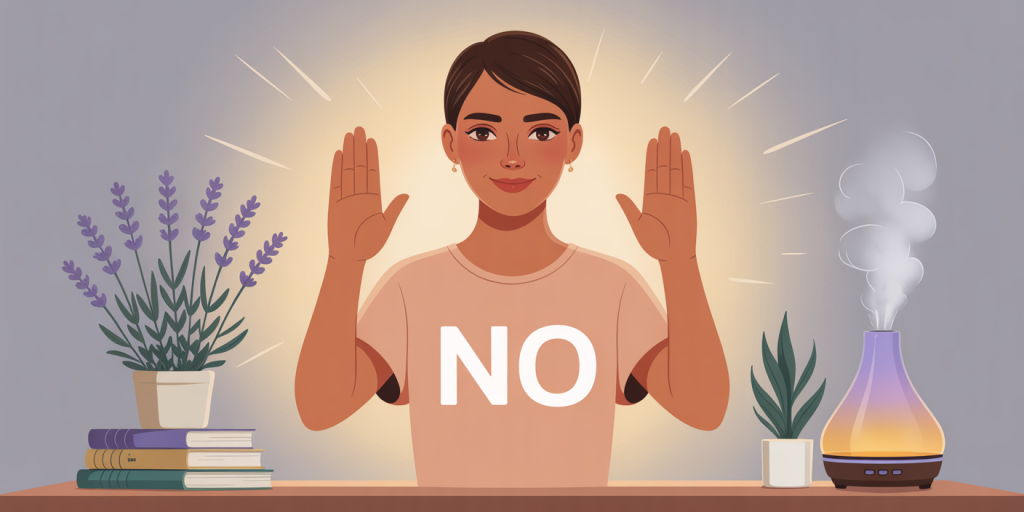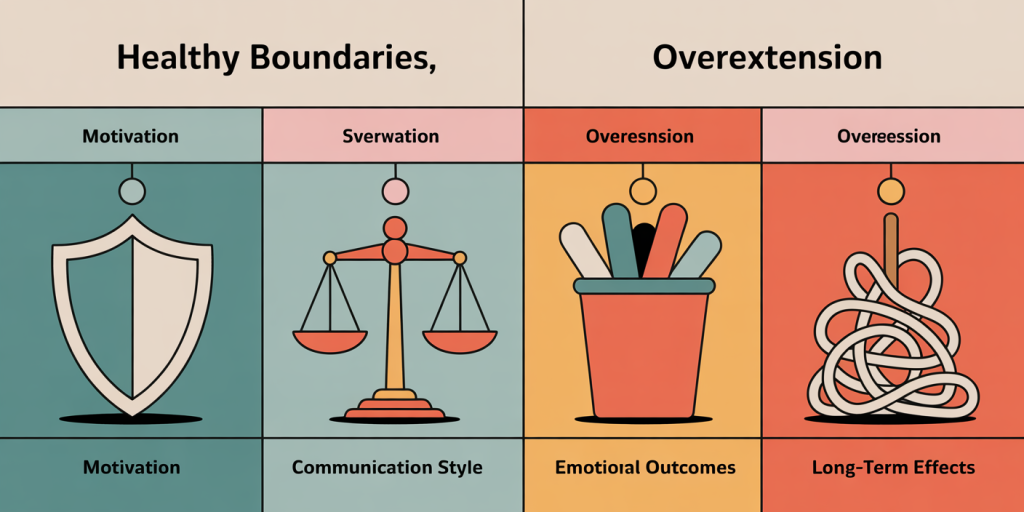How to Set Boundaries Without Feeling Guilty
Setting personal boundaries is an essential skill for maintaining mental health, fostering healthy relationships, and enhancing overall well-being. However, many people struggle with imposing limits, often feeling guilty or selfish when they say no or prioritize their own needs. This article delves into actionable strategies that help individuals set clear boundaries while minimizing feelings of guilt. By understanding why guilt arises during boundary-setting and exploring practical methods to combat it, readers can empower themselves to build healthier interactions both personally and professionally.

Understanding the Roots of Guilt When Setting Boundaries
Guilt related to boundary-setting often stems from deeply ingrained societal and cultural expectations. For example, nurturing roles and collectivist cultures emphasize self-sacrifice and prioritizing others, which can make individuals feel they are letting others down if they refuse or limit their availability. Psychological studies confirm that people, especially women, report higher guilt levels when enforcing boundaries due to social conditioning (Tangney, 2007).
Moreover, personal history plays a significant role. People raised in environments where boundaries were blurred or punished may associate saying no with negative outcomes. In a survey by the American Psychological Association (2022), about 59% of respondents admitted they hesitate to express their limits fearing disapproval or conflict. Understanding this context is critical before attempting to set boundaries guilt-free.
Recognizing Healthy Boundaries Versus Overextension
Anúncios
Before setting boundaries, it’s vital to distinguish between healthy self-protection and overextension caused by guilt. Healthy boundaries help define acceptable behavior and protect personal emotional and physical space. For instance, telling a coworker, “I’m unavailable to work late tonight,” is asserting a boundary that respects your time. By contrast, overextension occurs when someone consistently says yes despite personal discomfort or resentment.
A practical example is seen in Jane, a project manager who felt obligated to cover for team members regularly. Over time, Jane noticed burnout and resentment growing but feared disappointing her colleagues. After learning to communicate her limits respectfully, such as delegating tasks with clear expectations, her work satisfaction increased and her team adjusted to new workload boundaries.
The following table highlights differences between healthy boundaries and harmful overextension:
Anúncios
| Aspect | Healthy Boundaries | Overextension |
|---|---|---|
| Motivation | Self-care and mutual respect | Fear of disappointing others |
| Communication Style | Clear, assertive, and respectful | Vague, apologetic, or avoidant |
| Emotional Outcome | Empowerment and reduced stress | Resentment, stress, and burnout |
| Long-term Effect | Improved relationships and wellbeing | Emotional exhaustion, possible relationship strain |
Understanding the distinction guides individuals to assert limits without unnecessarily burdening themselves with guilt.

Practical Steps to Set Boundaries Without Guilt
Setting boundaries effectively involves both internal mindset shifts and external communication strategies. One foundational step is reframing the narrative around saying no. Instead of viewing refusal as rejection, consider it an act of honesty and self-care. For example, if asked to attend a social gathering after a long workweek, responding with, “Thank you for inviting me, but I won’t be able to make it because I need to rest,” is polite yet firm.
Active assertiveness training can assist in this reframing. Role-playing scenarios where individuals practice saying no and expressing needs clearly builds confidence. According to research published in the Journal of Behavioral Therapy (2020), assertiveness training improves participants’ ability to maintain boundaries by 40%, reducing feelings of guilt significantly.
Another important step is identifying personal values and priorities as a reference point for boundary-setting. When boundaries align with deeply held values—such as family time, mental health, or spirituality—it becomes easier to justify and communicate limits. For example, Michael, a freelance designer, schedules blocks of uninterrupted time daily because creativity requires focus. When clients ask for last-minute changes, he explains, “I respect your deadlines; however, I’ve allocated this time specifically to maintain quality work and prevent burnout.”
Leveraging tools like “I” statements also facilitates guilt-free communication. Rather than accusing or blaming, framing boundaries with personal feelings fosters empathy. For instance, “I feel overwhelmed when dealing with multiple tasks simultaneously, so I need to complete one before starting the next.” This approach reduces defensiveness and helps others understand your perspective.
Overcoming Common Barriers to Boundary-Setting
Despite understanding techniques, many individuals face psychological barriers that provoke guilt or fear rejection. One common barrier is people-pleasing tendencies rooted in low self-esteem or the desire for social approval. Cognitive-behavioral therapy (CBT) suggests challenging automatic negative thoughts that say, “If I set boundaries, they won’t like me.”
A practical technique is journaling feelings associated with boundary situations to identify and dispute irrational guilt. For example, someone named Emily realized that she often thought, “I’m being selfish by not helping my friend move,” but writing this down and reviewing alternative rational responses helped reduce her guilt over time.
Cultural and family expectations pose another hurdle. In collectivist societies, saying no might be equated with dishonoring family or community. Negotiating boundaries here requires sensitivity and gradual adjustments. For instance, Chen, from a traditional Asian family, found success by explaining boundaries in terms of wanting to maintain harmony and long-term relationships, such as, “I want to be fully present when we meet, so I prefer to limit my work calls during family time.”
Supporting network building also helps overcome guilt. Surrounding oneself with friends, mentors, or therapists who respect your boundaries can reinforce self-acceptance and reduce fear of rejection. Peer support groups for boundary-setting exist online and in communities, fostering shared learning experiences.
Real-Life Cases Demonstrating Successful Boundary-Setting
Consider Sara, a nurse working long shifts during the pandemic. Previously, Sara felt pressured to answer all work-related calls even during her rest time, leading to chronic fatigue. After attending a workshop on professional boundaries, she instituted specific “offline hours,” informing her team that she would only respond during working shifts. When colleagues questioned her, Sara calmly explained this was to maintain her mental health and continue providing quality care. The result? Reduced burnout with no negative impact on her workload, illustrating how clear communication plus self-care benefits all parties.
In a personal relationship scenario, Raj struggled with saying no to family requests that conflicted with his own schedule. Feeling guilty, he conceded repeatedly. After realizing that guilt stems from feeling responsible for others’ happiness, Raj started setting limits by scheduling weekly family times and respectfully declining last-minute demands, e.g., “I won’t be able to join dinner tonight, but I look forward to Sunday.” This balance enhanced his relationships while alleviating his stress.
These cases showcase the power of boundary-setting in diverse contexts, strengthening emotional resilience without fostering guilt.
The Role of Technology and Social Media in Modern Boundary Challenges
The digital age has complicated boundary-setting by creating an “always-on” culture. Smartphones and social media blur work-life lines, increasing the risk of overextension and guilt over disconnecting. A Pew Research Center study (2023) found that 55% of employees feel pressured to be available outside work hours due to technology.
Practical strategies to restore boundaries in this arena include: Designating tech-free times or zones at home (e.g., no phones at dinner) Using apps that limit screen time or mute non-urgent notifications Setting clear expectations with colleagues about response times, e.g., “I respond to emails during business hours only.”
Comparatively, individuals who actively regulate digital boundaries report 33% less stress linked to work-family conflict (APA, 2022).
| Strategy | Description | Expected Outcome |
|---|---|---|
| Tech-free zones | No devices during meals or before sleep | Improved personal connection and rest |
| App-based limits | Screen timers or notification silencing | Reduced distractions and digital fatigue |
| Communication norms | Clarifying work response expectations | Lowered pressure and guilt for unavailability |
Recognizing and managing technology’s influence on boundaries is crucial for guilt-free living in modern life.

Envisioning a Future with Empowered Boundary-Setting
As societal awareness of mental health grows, boundary-setting is likely to become normalized and even encouraged across cultures and workplaces. Emerging practices such as “boundary coaching” and organizational policies focusing on employee well-being signify progressive trends.
Future perspectives include integration of boundary education in schools, equipping young people with skills for emotional intelligence and assertiveness from early on. On a professional level, companies adopting flexible schedules and promoting psychological safety demonstrate a shift toward respecting personal limits as essential to productivity and creativity.
Technological advancements may provide innovative boundary-support tools, such as AI-driven apps that monitor workload and prompt users to rest or delegate tasks. Communities focused on boundary advocacy will help destigmatize saying no, transforming guilt into healthy self-respect.
In sum, setting boundaries without guilt is a dynamic, evolving process supported by cultural shifts and personal growth methodologies. By embracing these changes, individuals and societies can foster environments where respect for personal limits is standard, nurturing overall happiness and mental wellness.
